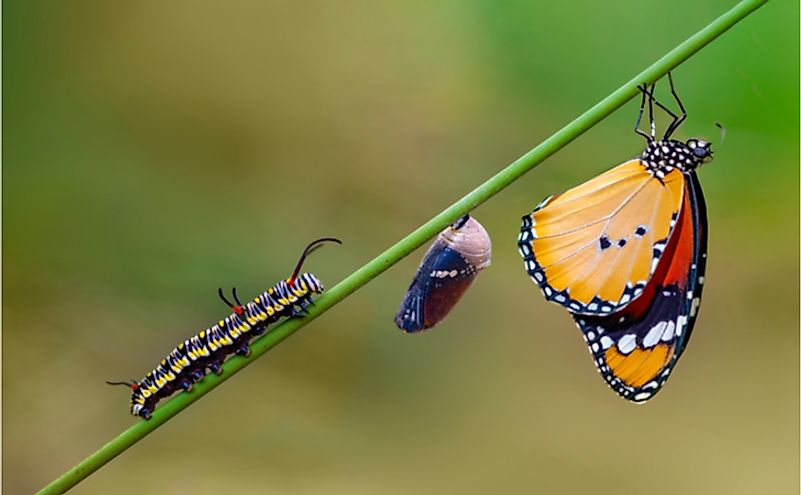10 Interesting Facts About Caterpillars

Caterpillars are the larval stage of the butterflies and moths that belong to the scientific order Lepidoptera. Eventually, a caterpillar turns into a butterfly or moth. Below are some interesting facts about caterpillars;
1. The primary role of a caterpillar is to eat
Caterpillars eat so much food that it is believed they consume as much as 27,000 times their body size. As a result, the caterpillars may end up being 100 times larger than their size when they hatch. When a caterpillar gets out of its shell, its first meal is the eggshell which is rich in protein. Eating is important in this phase as it helps in the process of metamorphosis and adulthood. Caterpillars that do not feed well are unable to give birth when they become butterflies or moths.
2. Similar to adult moths and butterflies, caterpillars possess six true legs
Much as one sees more than six legs on a caterpillar, only the six legs found on its thorax are true legs. The other legs are false legs (called prolegs) that help the caterpillar to climb and move around plant surfaces. Prolegs may be as many as 10 and are usually located on a caterpillar’s abdomen. A unique feature of these legs is that they have tiny hooks to enable them to grasp on the surfaces and avoid sliding and falling.
3. Caterpillars are known for silk production
Caterpillars produce silk through an opening on their lips known as the spinneret that releases liquid silk. Once the liquid silk gets into contact with the air, it hardens into silk.
4. Caterpillars have 4000 muscles which are almost six times the number of muscles in humans
Unlike human beings who possess only 629 muscles, caterpillars have 4,000 muscles. Every one of the muscles has one or two neurons attached to it. The many muscles are unique to caterpillars as insects such as grasshoppers have only 900 muscles. The muscles are essential as they help the caterpillars in moving from one point to the other.
5. Caterpillars have 12 eyes arranged in a semi-circle
Caterpillars have 12 tiny eyelets that are known as stemmata. These eyes are arranged in a semi-circle from one side of the head to the other. The stemmata help the caterpillars to identify light and darkness. However, they do not result in excellent vision as the caterpillar is unable to see an image or visualize colors. Thus, caterpillars move “blindly” from one place to another.
6. The Assassin caterpillar can kill humans
The assassin caterpillar, also known as giant silkworm moth, has caused many human deaths in South Africa (especially in Brazil). Its venom is under scientific research. Contact with the assassin caterpillar results in a person bleeding to death. The caterpillar’s scientific name is Lonomia obliqua.
7. Caterpillars are capable of mimicking a snake to protect themselves from predators
They arrange themselves in a row which comprises about 300 caterpillars so that they resemble a snake. Consequently, a predator will avoid them for fear of the snake’s venom.
8. Caterpillars lack lungs which is the primary respiratory organ in most animals
Instead of lungs, caterpillars possess spiracles that are located on each side of their bodies. These spiracles are connected to the trachea. Breathing in and out of oxygen and carbon dioxide respectively occurs during the movement of the caterpillar.
9. The kind of movement exhibited by the caterpillars is not found in any other animal on earth
Caterpillars move in a wave-like pattern from the back to its front. Since they do not have a bone in their body, caterpillars move by squeezing their muscles in a wave motion. No other animal moves like the caterpillar.
10. South Africans and Batswana eat a species of caterpillar known as Mopani
South Africans believe that Mopani is rich in good and healthy proteins. The Batswana, people of Botswana, enjoy eating dried Mopani caterpillar as a snack. However, they do not eat its head.











